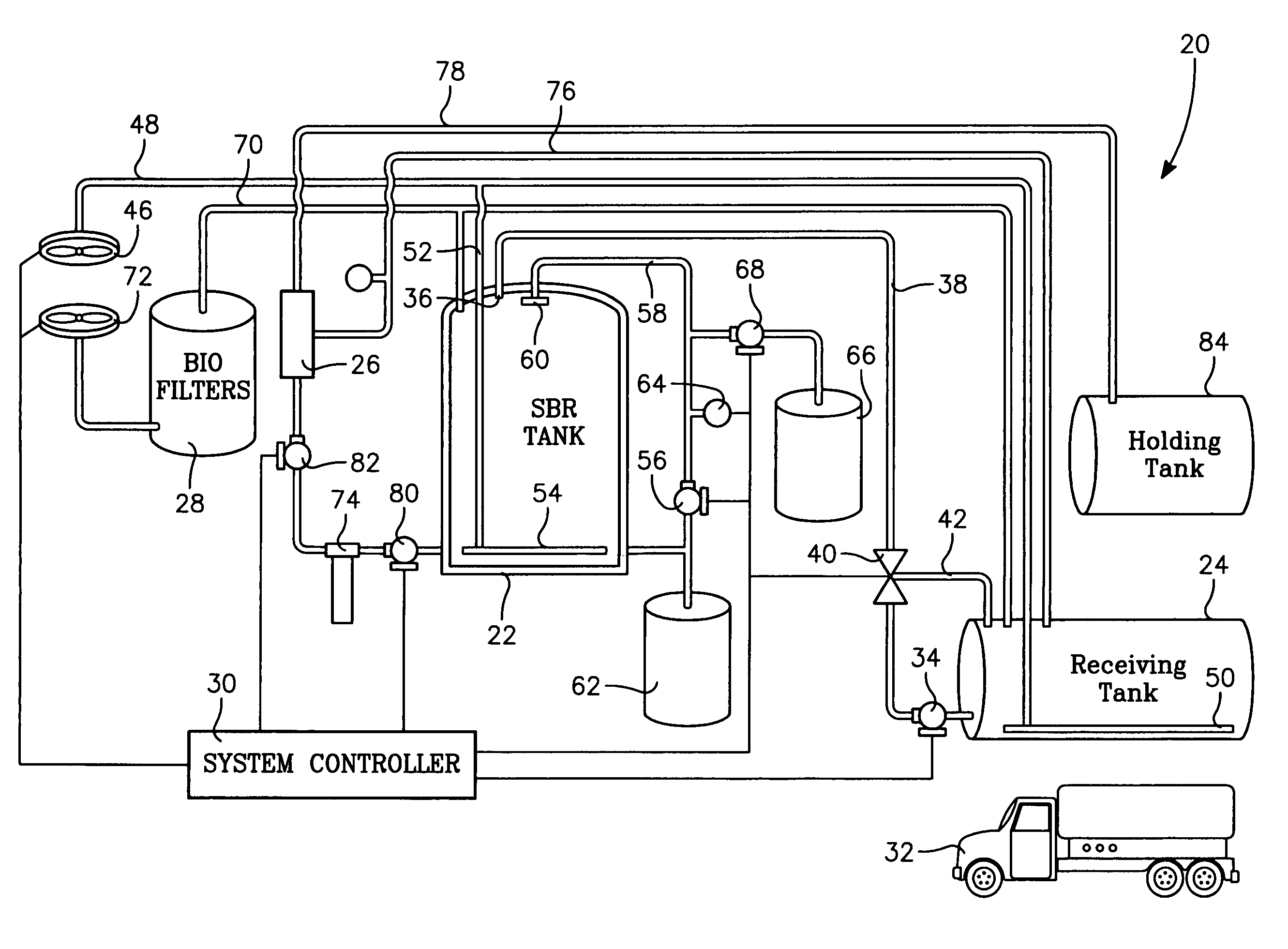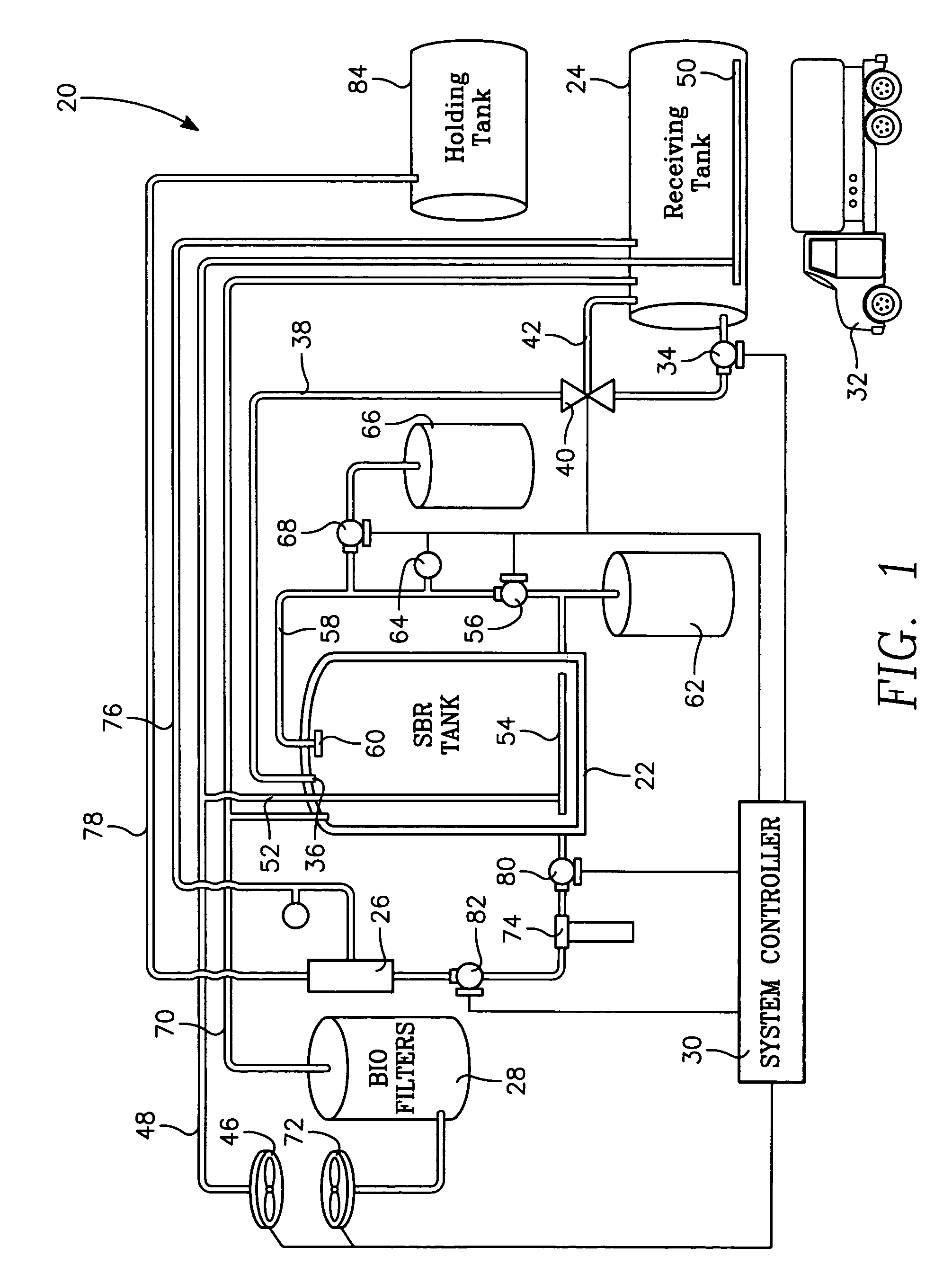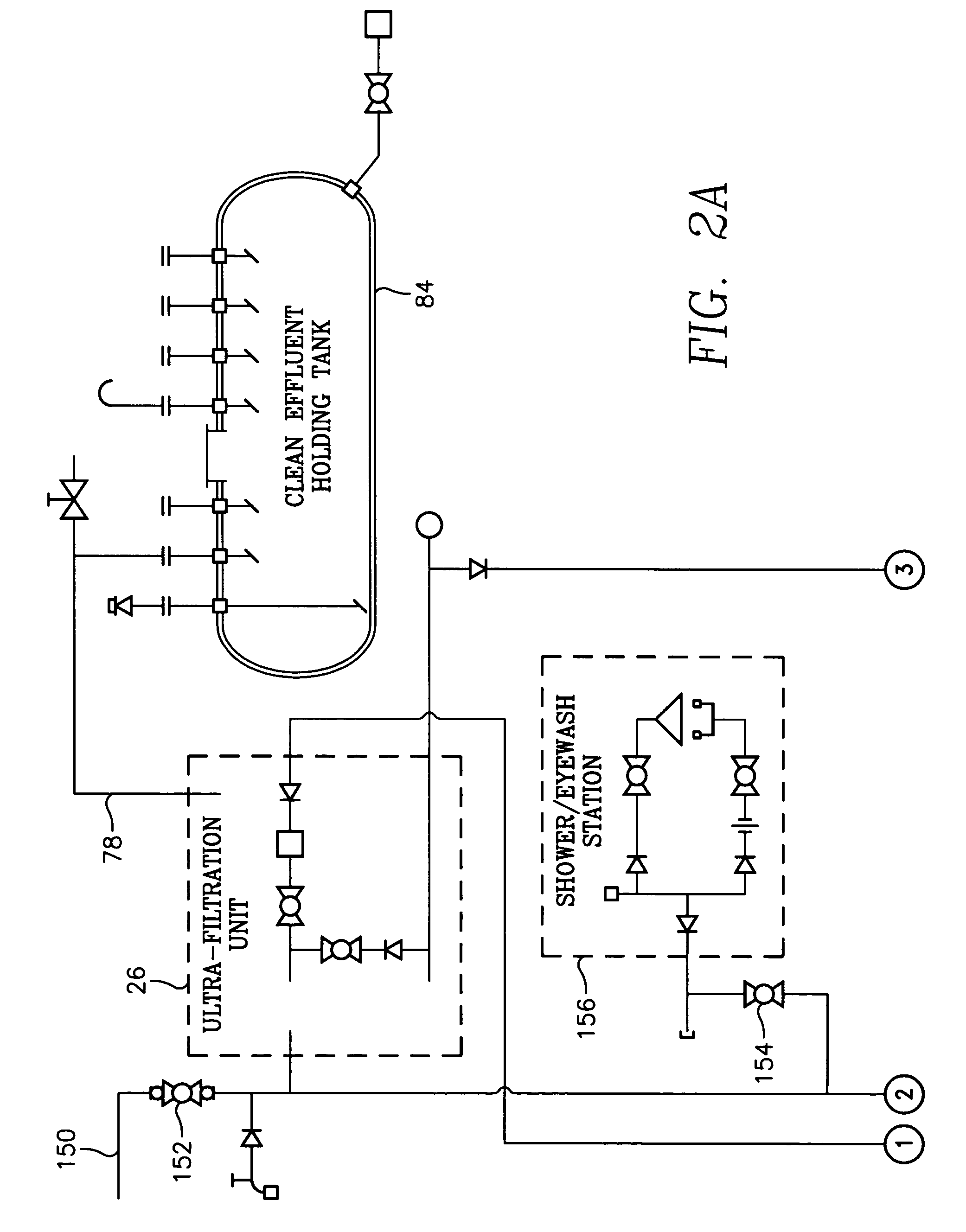Bioreactor system for biological degradation of oily sludge
a biological degradation and bioreactor technology, applied in the direction of filtration separation, multi-stage water/sewage treatment, separation process, etc., can solve the problems of air pollution, inability to achieve biological treatment systems, and inability to biologically treat some organic pollutants such as pcbs, so as to reduce the fouling of ultrafiltration membranes
- Summary
- Abstract
- Description
- Claims
- Application Information
AI Technical Summary
Benefits of technology
Problems solved by technology
Method used
Image
Examples
Embodiment Construction
[0021]Referring to FIG. 1, FIG. 1 illustrates a schematic diagram of bioreactor system / installation 20 and its associated components. The major components are of the reactor installation are the sequencing batch reactor tank / bioreactor tank 22, a sludge receiving tank 24, an ultrafiltration unit 26, compost filled biofilters 28, and a controller / control room 30. The nature of the waste to be treated, and capacity of the tanks requires the bioreactor installation 20 to be installed on a concrete pad with secondary containment.
[0022]The raw material for treatment by bioreactor tank 22 is oily sludge. Sources at military facilities which provide the oily sludge include but are not limited to fuel tank bottoms, pump stations, wash racks, and oil / water separators. Oily sludge is delivered via a dedicated pipeline or vacuum trucks 32 to receiving tank 24, where the oily sludge is diluted and run through a trash pump 34 to produce a homogenous slurry. The discharge port of trash pump 34 is...
PUM
| Property | Measurement | Unit |
|---|---|---|
| time period | aaaaa | aaaaa |
| pH | aaaaa | aaaaa |
| time | aaaaa | aaaaa |
Abstract
Description
Claims
Application Information
 Login to View More
Login to View More - R&D
- Intellectual Property
- Life Sciences
- Materials
- Tech Scout
- Unparalleled Data Quality
- Higher Quality Content
- 60% Fewer Hallucinations
Browse by: Latest US Patents, China's latest patents, Technical Efficacy Thesaurus, Application Domain, Technology Topic, Popular Technical Reports.
© 2025 PatSnap. All rights reserved.Legal|Privacy policy|Modern Slavery Act Transparency Statement|Sitemap|About US| Contact US: help@patsnap.com



